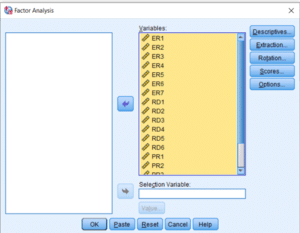
Learn How to perform Exploratory Factor Analysis using SPSS. The tutorial covers in detail
- Concept of Exploratory Factor Analysis
- Differences between EFA and CFA
- Key Terms in Exploratory Factor Analysis
- Process of Conducting Exploratory Factor Analysis
- Reporting Exploratory Factor Analysis
To see complete SPSS playlist for more tutorials, Click Here
